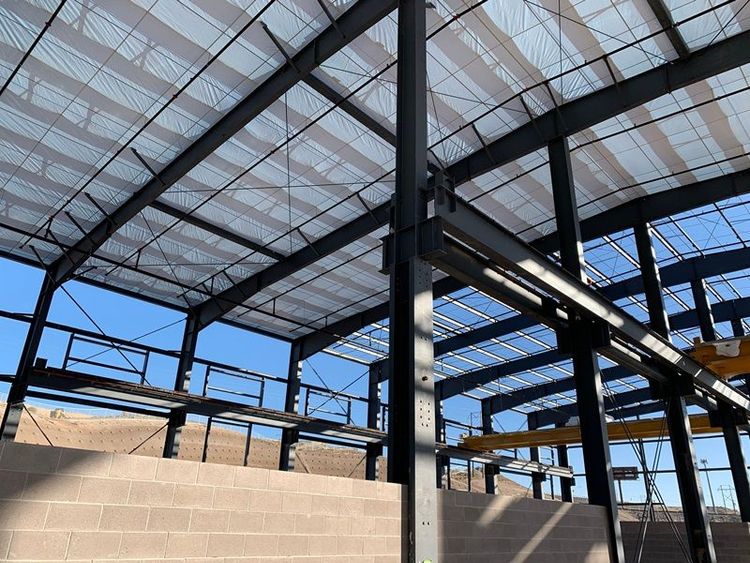Speed of construction:
A. Streamlined manufacturing and assembly processes: PEBs are known for their swift construction due to streamlined manufacturing and assembly procedures. Components are pre-fabricated in controlled factory environments, optimising production timelines. Once on-site, the assembly process involves efficient methods, such as bolted connections or welding, significantly reducing construction duration compared to conventional building methods.
B. Examples of rapid deployment in industrial settings: Numerous industrial projects have showcased the rapid deployment capabilities of pre-engineered buildings. From warehouses to manufacturing plants, these structures have been swiftly erected, meeting strict timelines and allowing businesses to quickly start or expand operations without prolonged construction periods.
C. Operational advantages due to quicker implementation: The accelerated construction of PEBs translates into operational advantages for industries. Businesses can expedite their go-to-market strategies, accelerate production timelines, and swiftly adapt to market demands. The reduced construction duration minimises downtime, enabling companies to start utilising the facility sooner, leading to increased productivity and faster returns on investment.
Sustainability and eco-friendliness:
A. Energy efficiency and green construction materials: Pre-engineered buildings prioritise energy efficiency by utilising green construction materials and design strategies. These buildings incorporate eco-friendly materials like recycled steel and sustainable components, reducing the environmental impact of construction. Additionally, they often integrate energy-efficient features such as insulation, natural lighting, and ventilation systems to minimise energy consumption during operation.
B. Reduced carbon footprint compared to conventional structures: PEBs contribute to a significantly reduced carbon footprint compared to conventional structures. The manufacturing process of pre-engineered components generates fewer emissions due to controlled fabrication environments and optimised material usage. Additionally, the energy-efficient design of these buildings leads to lower energy consumption over their lifecycle, further decreasing carbon emissions.
C. Compliance with environmental regulations: Pre-engineered buildings align with stringent environmental regulations and sustainability standards. These structures are designed and constructed to comply with green building certifications like leed (leadership in energy and environmental design) or other regional environmental standards. This commitment to environmental compliance ensures that PEBs meet or exceed the requirements set forth by regulatory bodies, demonstrating a dedication to sustainable practices.







 +91 7208055523
+91 7208055523
 Help & support
Help & support
